Study on gene expression in the liver at various developmental stages of human embryos
- PMID: 39845086
- PMCID: PMC11751009
- DOI: 10.3389/fcell.2024.1515524
Study on gene expression in the liver at various developmental stages of human embryos
Abstract
Background: The normal development of the liver during human embryonic stages is critical for the functionality of the adult liver. Despite this, the essential genes, biological processes, and signal pathways that drive liver development in human embryos remain poorly understood.
Methods: In this study, liver samples were collected from human embryos at progressive developmental stages, ranging from 2-month-old to 7-month-old. Highly expressed genes and their associated enrichment processes at various developmental stages of the liver were identified through transcriptomic sequencing.
Results: The findings indicated that genes associated with humoral immune responses and B-cell-mediated immunity were highly expressed during the early developmental stages. Concurrently, numerous genes related to vitamin response, brown adipocyte differentiation, T cell differentiation, hormone secretion, hemostasis, peptide hormone response, steroid metabolism, and hematopoietic regulation exhibited increased expression aligned with liver development. Our results suggest that the liver may possess multiple functions during embryonic stages, beyond serving hematopoietic roles. Moreover, this study elucidated the complex regulatory interactions among genes involved in lymphocyte differentiation, the regulation of hemopoiesis, and liver development. Consequently, the development of human embryonic liver necessitates the synergistic regulation of numerous genes. Notably, alongside conventionally recognized genes, numerous previously uncharacterized genes involved in liver development and function were also identified.
Conclusion: These findings establish a critical foundation for future research on liver development and diseases arising from fetal liver abnormalities.
Keywords: development; gene expression; human embryos; livers; transcriptomic sequencing.
Copyright © 2025 Chen, Li, Cai, Huang, Gao, Ding, Li, Guan, Chen, Wang, Li and Shi.
Conflict of interest statement
The authors declare that the research was conducted in the absence of any commercial or financial relationships that could be construed as a potential conflict of interest.
Figures
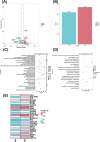

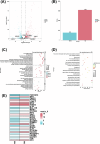
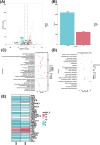
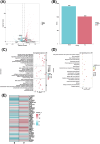
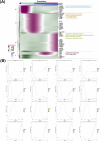
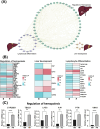
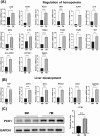
Similar articles
-
Study on gene expression in stomach at different developmental stages of human embryos.Front Cell Dev Biol. 2025 May 30;13:1564789. doi: 10.3389/fcell.2025.1564789. eCollection 2025. Front Cell Dev Biol. 2025. PMID: 40519260 Free PMC article.
-
Transcriptome analysis reveals potential immune function-related regulatory genes/pathways of female Lubo goat submandibular glands at different developmental stages.PeerJ. 2020 Oct 7;8:e9947. doi: 10.7717/peerj.9947. eCollection 2020. PeerJ. 2020. PMID: 33083113 Free PMC article.
-
Comprehensive circRNA expression profile and hub genes screening during human liver development.Ann Med. 2025 Dec;57(1):2497111. doi: 10.1080/07853890.2025.2497111. Epub 2025 Apr 25. Ann Med. 2025. PMID: 40285372 Free PMC article.
-
Cooperation of liver cells in health and disease.Adv Anat Embryol Cell Biol. 2001;161:III-XIII, 1-151. doi: 10.1007/978-3-642-56553-3. Adv Anat Embryol Cell Biol. 2001. PMID: 11729749 Review.
-
Retrospective analysis: reproducibility of interblastomere differences of mRNA expression in 2-cell stage mouse embryos is remarkably poor due to combinatorial mechanisms of blastomere diversification.Mol Hum Reprod. 2018 Jul 1;24(7):388-400. doi: 10.1093/molehr/gay021. Mol Hum Reprod. 2018. PMID: 29746690
Cited by
-
MTH1 in the disorders of the central nervous system: scope beyond brain tumors and challenges.Acta Neurol Belg. 2025 Feb 17. doi: 10.1007/s13760-025-02747-6. Online ahead of print. Acta Neurol Belg. 2025. PMID: 39960601 Review.
References
LinkOut - more resources
Full Text Sources

